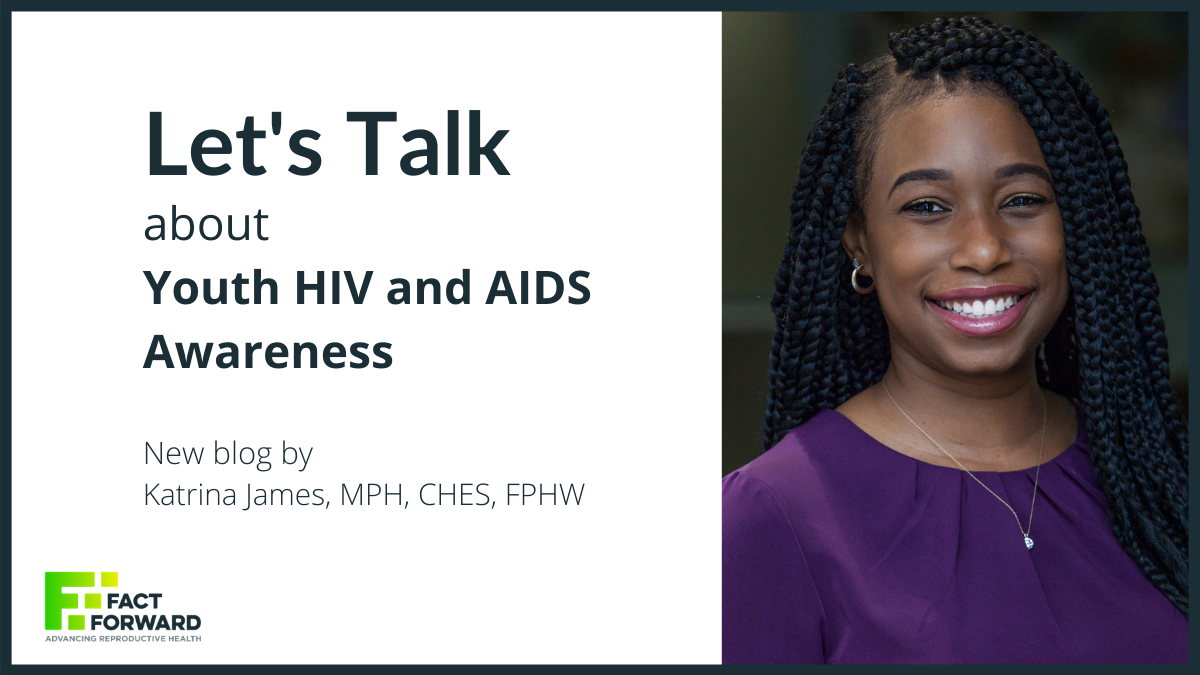Let's Talk about Youth HIV & AIDS Awareness
 As far back as I can remember learning about sexual health, HIV/AIDS never really centered around young people which of course is an unfortunate prevention mistake. There are many people who have no idea that April 10th is even National Youth HIV/AIDS Awareness Day and I want to talk about why the day is important.
As far back as I can remember learning about sexual health, HIV/AIDS never really centered around young people which of course is an unfortunate prevention mistake. There are many people who have no idea that April 10th is even National Youth HIV/AIDS Awareness Day and I want to talk about why the day is important.
National Youth HIV/AIDS Awareness Day is a day to bring education and awareness to get the word out to everyone about the importance of prevention, testing, and the impact HIV/AIDS can potentially have on young people.
According to the CDC, in 2018, youth aged 13 to 24 made up 21% of the 37,832 new HIV diagnoses in the United States (US) and dependent areas. Youth with HIV are the least likely of any age group to be retained in care and have a suppressed viral load. Addressing HIV in youth requires that young people have access to the information and tools they need to make healthy decisions and reduce their risk for getting HIV, and to get treatment and stay in care if they have HIV (CDC, 2018)
So now that I have given you a little information on what this day is and the data that shows you how prevalent this is among young people, let’s talk about some of the prevention challenges that keep young people from getting tested. Some big reasons for not getting tested could include:
- Inadequate Sex Education
- Health Related Behaviors
- Low rates of Testing
- Substance Use
- Low rates of condom use
- Number of Partners
- Older Partners
- High rates of STDs/STIs
- Stigma around HIV/AIDS
I want to talk a little more about the barrier of low rates of testing and what we can to do change that. I can honestly say when I was younger you would not catch me asking the doctor for an HIV test alone, and especially if my parent was in the clinic with me. We want to encourage our healthcare providers and staff to make sure that they are including this testing option during health visits. According to the NY Times, C.D.C. researchers reported in Pediatrics in 2016, that pediatricians and parents are testing five times fewer young people for H.I.V. than recommended by national guidelines. Only 22 percent of sexually active high school students were ever tested for H.I.V. (Lahey, 2016)
Let’s talk about how you can find places to get tested. On HIV.gov, you can enter in your zip code and they will let you know the places closest to you in your area. Fact Forward also has a clinic locator available here https://www.factforward.org/health-center-locator if you feel more comfortable visiting a health center or DHEC.
It is so important to stress the importance of HIV/AIDS testing for our young people because it can affect you at any age. Encourage more conversations with the young people in your lives whether you are a young person reading this, or an individual that works with young people to have more open discussions about HIV/AIDS and where to go to receive testing.
To learn more on how you can do your part, visit https://www.advocatesforyouth.org/nyhaad/, https://www.cdc.gov/healthyyouth/youth_hiv/resources.htm, https://www.advocatesforyouth.org/nyhaad/ and visit our website at factforward.org/resources to browse our free resources and/or follow us on Facebook, Twitter, Instagram or LinkedIn.